High Energy Rate Forming
For Sheet Metal
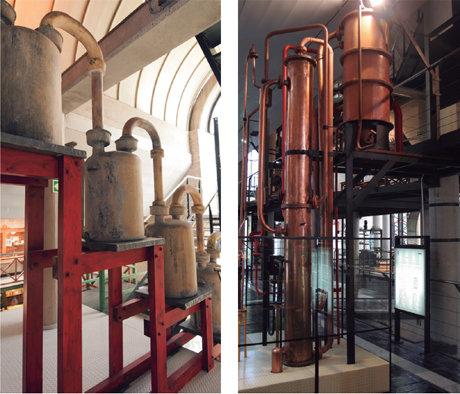
What is High Energy Rate Froming(HERF)?
High energy rate forming is the forming of sheet metal by a high energy surge, delivered over a very short time. Since the forming of the metal occurs so quickly, desirable materials for (HERF) will be ductile at high deformation speeds.
Now we will see the various Methods
Of
High Energy Rate Froming
Explosive
Forming
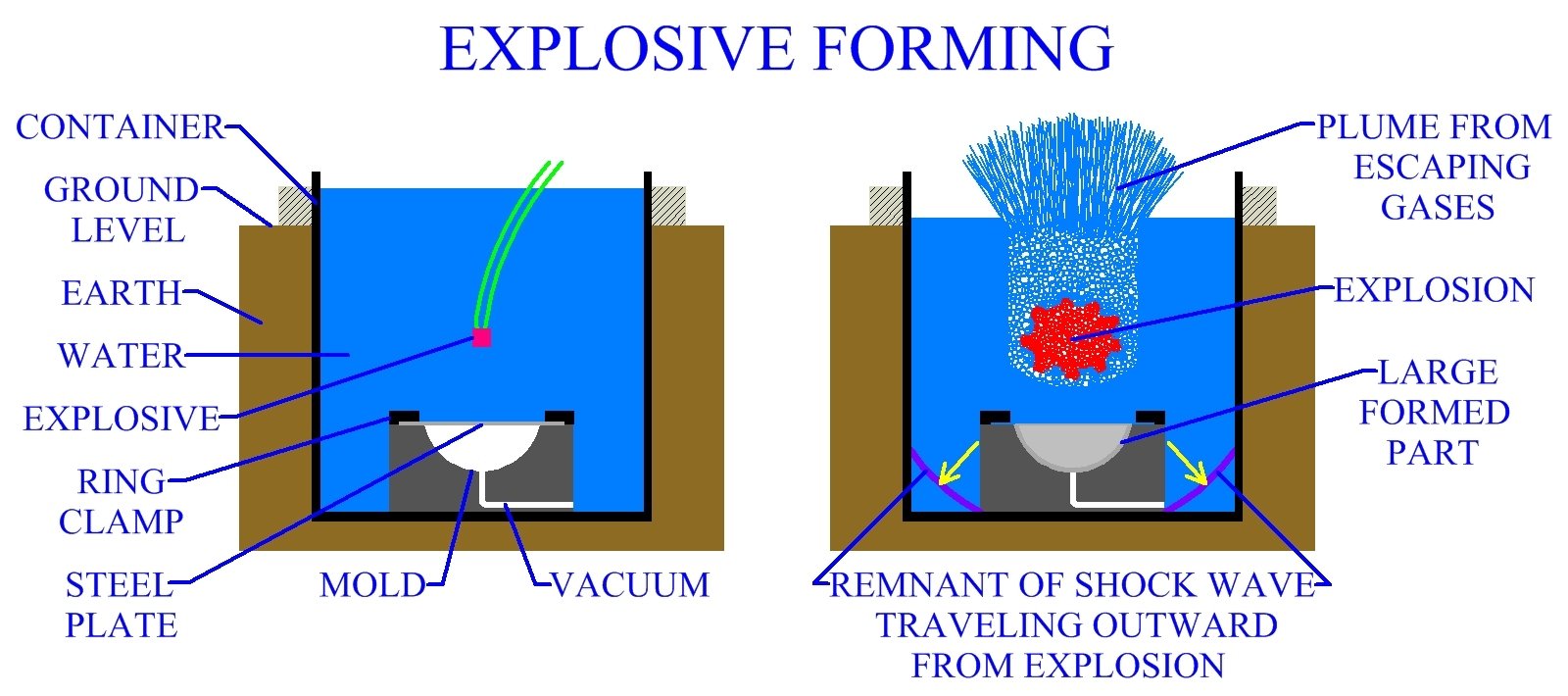
- Explosives can deliver huge amount of Power. However, Explosives are destructive, but their power can be harnessed to make Sheet Metal from Sheet Plates.
- Also known as Standoff System and is used for making larger parts.
- And how it is done, can be seen below...
- Explosive forming has a long cycle time and is suitable for low quantity production of large, unique parts.
- Mechanical properties imparted to the material as a result of the explosive forming process are similar to mechanical properties imparted to work manufactured by other forming processes.
- Molds can be made out of inexpensive or easy to shape materials, or molds can be made more permanent. Materials for molds include aluminum, wood, concrete, plastic, iron and steel.
- If a mold is manufactured from a material such as plastic, the low modulus of elasticity will greatly reduce springback in the sheet metal, resulting in higher accuracy.
Confined Explosive
Forming
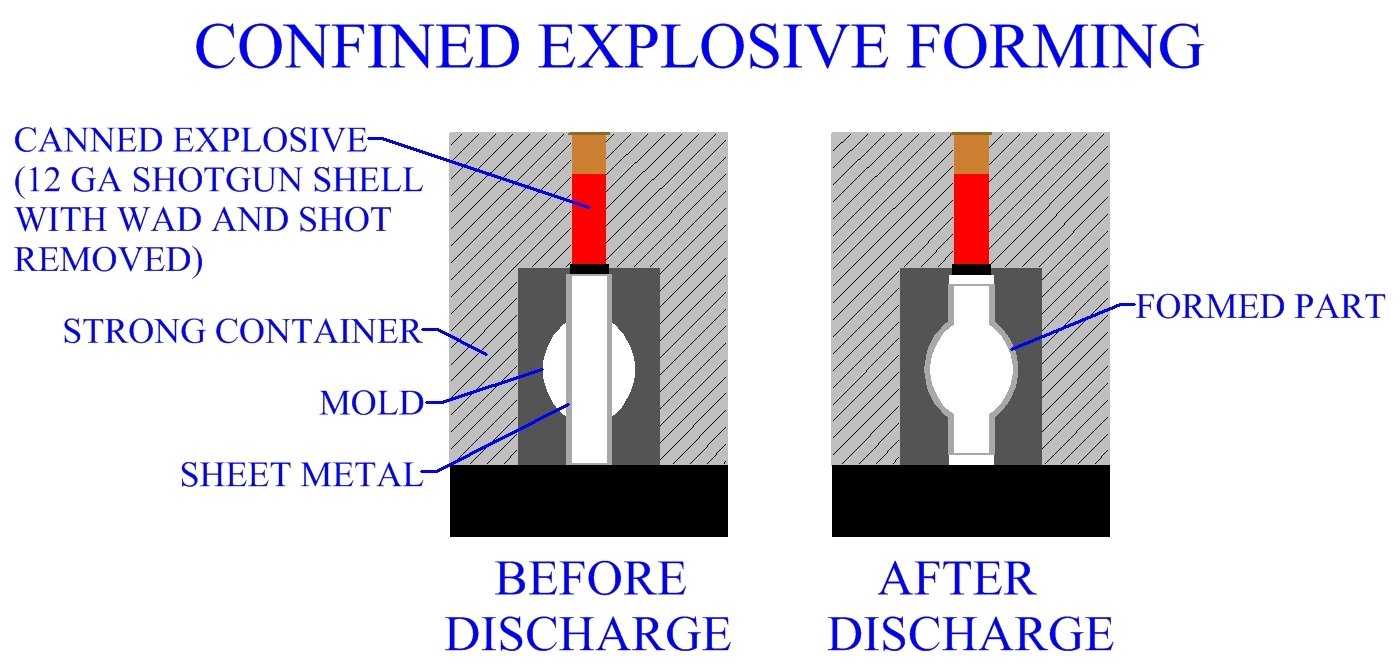
- Confined System uses a canned explosive or cartridge.
- This is usually used for relatively smaller parts than the standoff system.
- All of the energy is directed into a closed container, the walls of which contain the die cavity. The energy from the canned explosive forces the sheet metal into the walls of the mold, forming the part.
Electrohydraulic
Forming
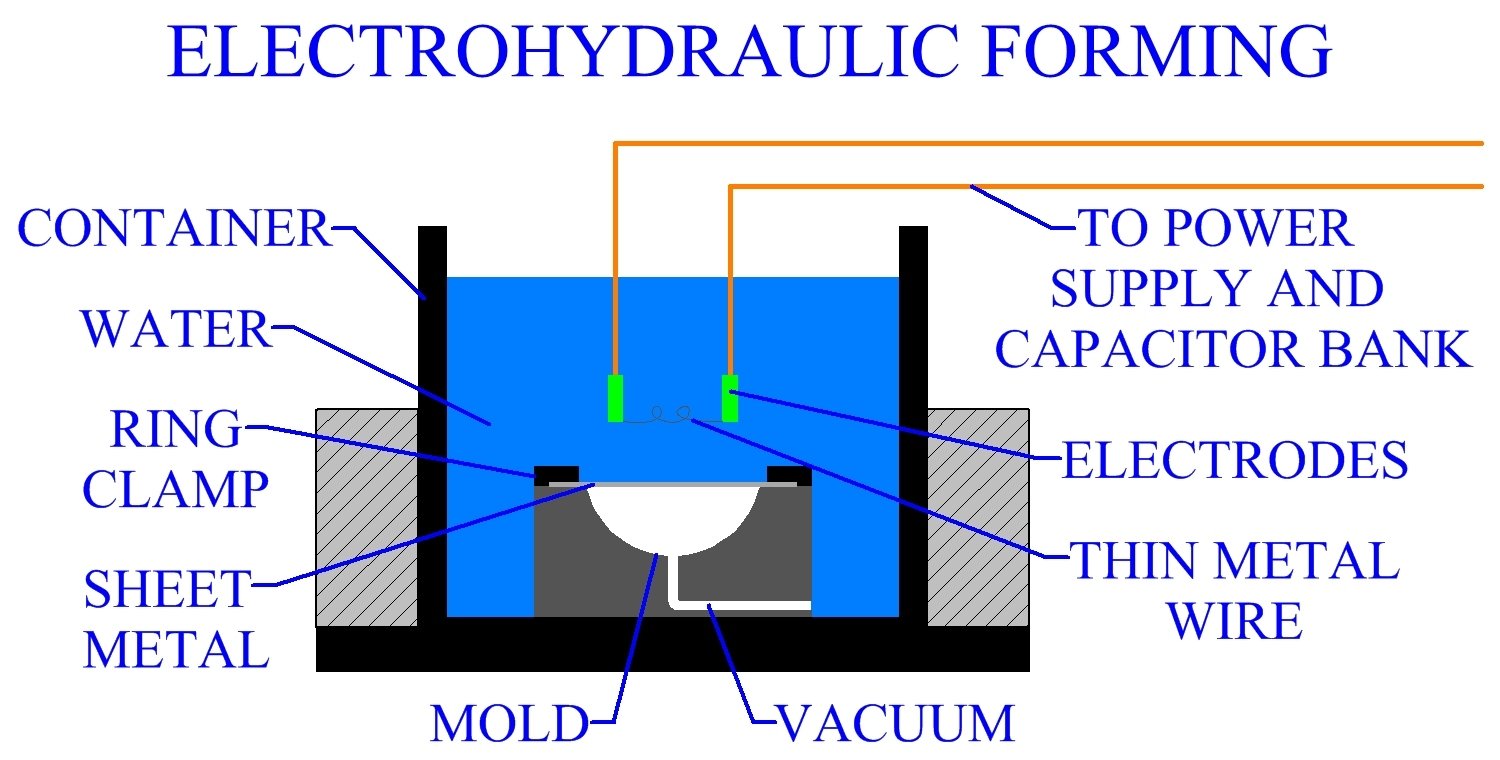
- Electrohydraulic forming, also called electric discharge forming, is a unique high energy forming process for sheet metal.
- This manufacturing process uses the energy from the combustion of a thin metal wire. Two electrodes, with a wire connecting them, are submersed in liquid.
- The wire needs to be replaced after every operation. Electrohydraulic forming may be considered to have a low production rate.
Electromagnetic
Forming
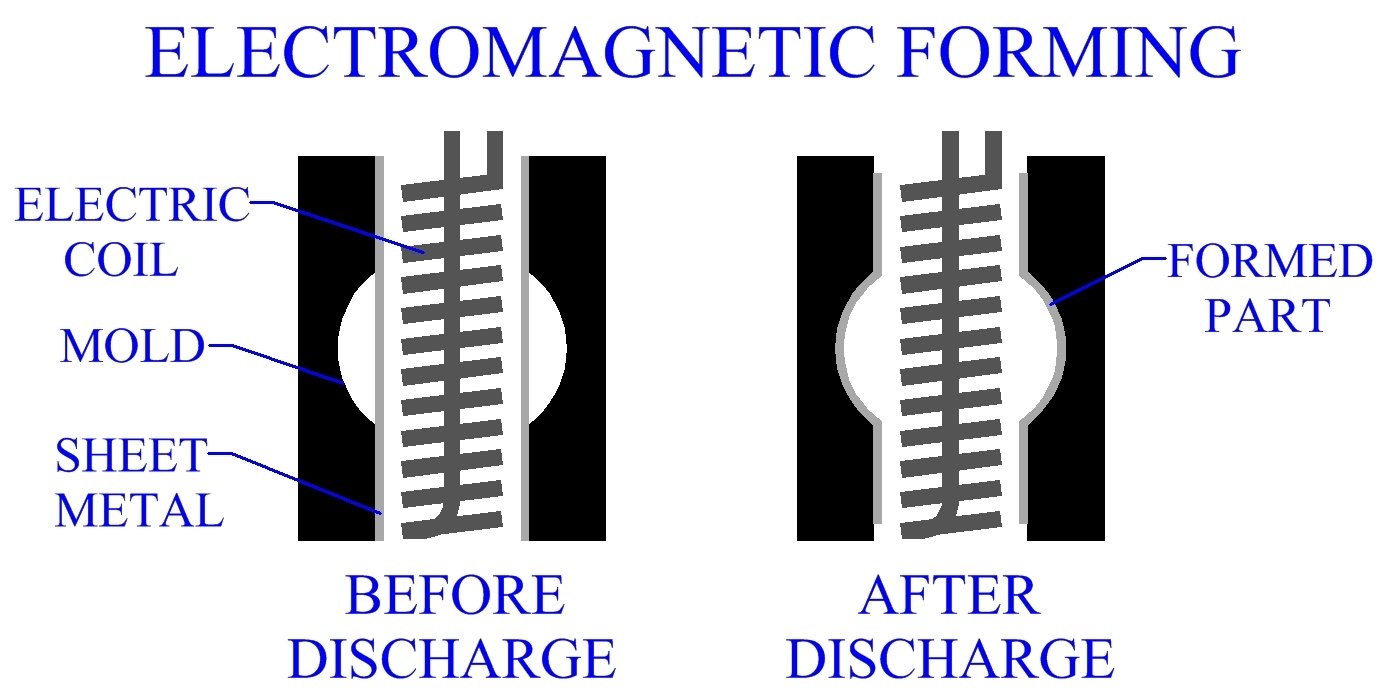
- Electromagnetic forming is a popular high energy rate forming process that uses a magnetic surge to form a sheet metal part.
- When a conductive material disrupts a magnetic field it produces a current in that material, this is called an eddy current. Due to the close proximity of the conductive sheet metal to the coil, the coil's magnetic field is disrupted and eddy currents are generated in the work piece.
- These currents in the sheet metal produce their own magnetic field that opposes the original magnetic field of the coil. The opposing forces push these fields apart and form the work. The coil may be placed inside or over the work, depending upon the desired effect.
- Many electromagnetic forming operations are used to bulge tubes, or form tubes over other parts such as rods and cables. Electromagnetic forming is used for relatively thinner sheet metal parts.

A pinched aluminium can, produced from a pulsed magnetic field created by rapidly discharging
2 kJ from a high voltage capacitor bank into a 3-turn coil of heavy gauge wire.

High Energy Rate Forming (Manufacturing Process)
By Tanay Agrawal
High Energy Rate Forming (Manufacturing Process)
- 2,233



